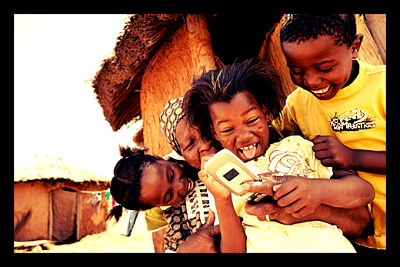Mobile Devices in Africa Becoming a Basic Necessity

The number of wireless devices in the U.S. outnumbers the population. With a population of 315 million in 2011, there were approximately 328 million mobile devices in the U.S. Americans enjoy mobile devices, as do an increasing number of the African population. Paul Kagame, current president of Rwanda, captured the growth of mobile devices in Africa by stating, “In 10 short years, what was once an object of luxury and privilege, the mobile phone, has become a basic necessity in Africa.”
Let’s look at some examples:
- Nigeria: A decade ago, landlines dominated in Nigeria, with about 100,000 phone lines. Today, Nigeria has close to 100 million mobile phone lines and the landline company is no longer in operation.
- Kenya: In the last decade, mobile phone subscribers have increased 500-fold. Additionally, in 2009, mobile phone sales increased by more than 200 percent when the 16 percent general sales tax was removed. The sales continue to rise.
- Rwanda: In 2010, mobile phone users grew by 50 percent. Doubled in one year!
- South Africa: 72 percent of those between the ages of 15 and 24 have cell phones.
- Africa as a whole: 650 million Africans, particularly the youth, use mobile phones for both social and functional purposes. This by far surpasses the number in the U.S. and Europe.
Although mobile phones across Africa generally consist of low-end Nokia phones used for the Short Messaging Service (SMS), smartphones with Internet capability are on the rise throughout the continent. In some African countries, mobile phones are more common than clean water, bank accounts and electricity, according to the World Bank and African Development Bank.
Why has there been an explosion in mobile phones? The main cause is the increasing reliance on mobile phones by youth. The youth, ages 15 to 24, depend on their mobile device not only for communication, but also for listening to the radio, transferring money, shopping, using social media and more. With some Africans only making $2 a day, many will occasionally skip their meals in order to pay the $5 and $8 monthly cell phone expenses.
Mobile devices are also used as a way of combating many social issues in Africa:
- Activism: Mobile devices have offered communication, transparency, organization, openness, and empowerment to the electoral process.
- Education: As mobile devices are more common and more affordable than PC’s, they are used as tools to deliver teaching content. As more than half of the parents in Africa are illiterate, there is hope that these teaching tools will have a positive impact on the education status of African children. In South Africa, MoMath, a mathematical teaching tool, has been launched.
- Disaster management: With constant wars and genocide occurring throughout Africa, displaced persons are commonplace. Through mobile devices, displaced persons are able to reconnect with their families.
- Agriculture: Agriculture is one of the largest employers throughout Africa. Through mobile phones, farmers are now able to make better decisions, resulting in more profit. Farmers use mobile phones to research weather information, market prices, and micro-insurance schemes.
- Health: According to the World Health Organization, nearly 30 percent of drugs supplied in developing countries are fake. Through SMS, buyers can send the code found within a scratch card on the medicine packaging to find out if the drug is fake or not. This is a life saving resource, as in Nigeria, nearly 100 babies died due to ingesting a solvent usually found in antifreeze through their teething medication.
By 2016, there will be an estimated billion mobile phones on the continent of Africa. This has a huge impact for potential investors. In Kenya alone, the use of mobile devices has had a big economic impact. The mobile device industry contributed about $3.6 billion to the country’s GDP and has provided numerous employment opportunities.
– Caressa Kruth
Sources: CNN, The African Report, Washington Post
Photo: Evidence4Action
